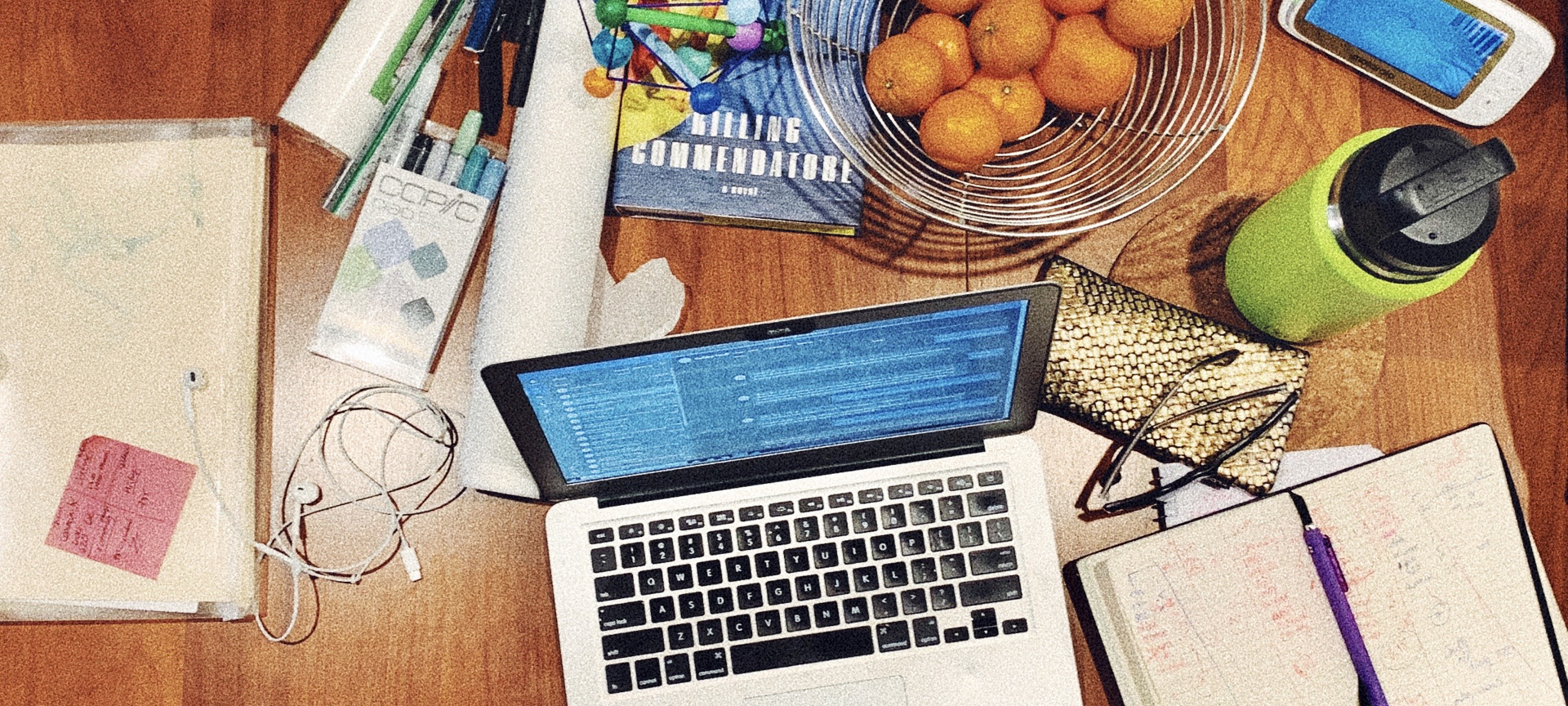Is the WFH honeymoon over? The gains of focus time, autonomy, and flexibility initially led to an increase in productivity. Now, many are struggling to maintain that once electric level of engagement and are, instead, experiencing burn out. With many businesses beginning to consider a hybrid solution (a mix of working from home and working at the office), a lag in remote productivity is a problem that needs to be solved.
This shift got us talking and we went directly to some of our most methodical minds for advice. Here’s how they maintain their own personal energy and drive, balance the extra demands in their personal lives, approach challenging (and sometimes dreaded) tasks, and work smart from start to finish.
List it Out!
When we’re juggling so many tasks, we can sometimes spend precious minutes deciding – or trying to recall – what needs to be tackled next. A list keeps the mind clear and, we can all agree, the feeling of crossing something off a list NEVER gets old. When those crosses are aplenty, we can ‘see’ our accomplishments. This is important because of a mysterious phenomenon that occurs at the end of the workday when we can only recall a few hours’ worth of work. If this happens to you, you’re not alone and there’s even a name for this occurrence: the “Zeigarnik effect”. We remember unfinished tasks FAR better than ones we’ve completed. If we can’t ‘see’ that completed to-do list, this effect can create anxiety driven by the idea that we’ve accomplished nothing, needing to work harder and do more.
Now that you have your pen and paper ready, here are a few very important tips: 1) List tasks in a manageable way. A task like “build a house” is foreboding and will overwhelm, but breaking it down into bite-sized assignments will make the larger project more easily achievable. 2) Structure is good, but be sure your to-do list isn’t stifling. Build in time for creativity by not jamming too much into a day. The goal of the list is an organized mind, allowing you to be more open and creative while tackling the tasks. 3) We’ve all heard this advice before – do your most dreaded task first – and when practiced, it has a borderline magical effect. Once a dreaded task is done, we’re relieved and the feelings of unease and angst disappear. With a clear mind and a more positive outlook, we can better focus on the remainder of our list. See, MAGIC.
— Jaime Hammond, Senior Project Designer and Samantha Reese, Project Manager
Check your priorities.
Distractions can win out even with a comprehensive list in hand. And working from home brings the inescapable blend of work and personal life. Although it may be assumed that prioritizing work tasks is the right move, emphasizing personal accomplishments may actually prove to be more fruitful at times. The current daily juggle is real; maintaining enough energy to get us through our workday leaves none for ourselves and our families. Daily personal tasks pile up, the weight of them brings us down, and we approach our professional work with less and less vigor. Prioritizing personal accomplishments, on the other hand, brings happiness and fulfillment – emotions that energize and benefit our work. So, take pause, do something for you, and put your all into it. You may once again find enthusiasm in your workday.
— Steve Spellman, Engineering Lead
Get your head in the game! Practice Mindfulness.
The ability to shift perspectives is a critical skill – moving fluidly from technical to creative tasks, receiving criticism then offering valuable feedback to another, focusing quietly then delivering a powerhouse presentation. Most people would call this multi-tasking – which is defined as tackling two or more tasks simultaneously. But what this really describes is an ability to focus entirely on a single task, maximizing output and improving the quality of our work. And then shifting seamlessly to a new activity without losing that focus. No easy achievement.
With so many professional communication channels, distance learning, our pets, that REALLY odd neighbor, and the magnetic pull to just a moment of Tik Tok entertainment, high level focus can seem impossible. One way to begin practicing and exercising the attention muscle is to take moments throughout the day to focus on the reality of our surroundings. Listen to the flow of air, observe the world around you behind closed eyes, study every detail of an everyday object. These pauses for awareness training can help you achieve that same level of attention when approaching your work, by clearing your mind and allowing you the space to deliver a job well done.
— Dave Seace, Senior Project Manager
Give up on the illusion of perfection.
It doesn’t exist. And, if it does, the effort to achieve it often requires far more time than a typical project can support. Our WFH life means that our work is currently measured in results, not efforts. If you’re delivering more perfect but fewer results than your colleagues, it’s time to reevaluate how you’re dedicating your time. While striving for perfection is an admirable trait and often a motivator for high quality work, it shouldn’t come at the expense of the project and the goals of the business. One of the best ways to break the habit of perfectionism is to look at the big picture. Ask yourself – What is the purpose of the project? What are the major project goals? What are the client’s/boss’s expectations? What is the anticipated deliverable? With those answers, a bite-sized to-do list can be generated with hours assigned. Consider how long each part of the project should require and do your best to stick to the schedule. Bake-in time (a reasonable amount) at the end to review and refine your work. With bigger results, you may find that good enough is far better than perfect.
— Michael Kalustov, Senior Project Architect
You may also enjoy…

